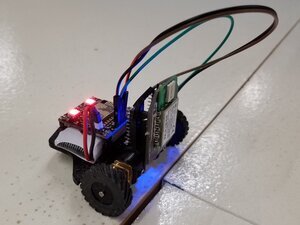
Oregon State University houses the Human Machine Teaming Lab and its Collective Robotics Testbed, which serves as a source of academic research and innovation. In order to support the infrastructure of this lab and to provide utilities to future research projects, this capstone project was designed and conducted with support and oversight from the group’s leading researchers. In order to best support the high volume of research endeavors undertaken by the lab in the physical context, the capstone team has designed a layer of flexible supporting software and hardware automating menial robot swarm management tasks, such as power management and data collection. The relevance of research into collective robotics becomes more prevalent now than ever as robotics breach an unprecedented variety of application domains, emphasizing this capstone’s contribution to the lab as an integral part of its rapidly escalating research agenda.
The primary focus of the capstone team was on the augmentation of the lab’s robotics with automatic wireless charging apparati. A sensor processing board was designed as an addon to the unmanned ground vehicles which, in addition to providing essential interfaces with a variety of advanced information I/O devices, enabled a Qi-protocol wireless charging interface. Concurrently and independently, the Qi charging docks in the testbed underwent a comprehensive assessment and repair, mitigating the cost of attrition to the facility.
In addition to these hardware innovations, the capstone team also provided a client-server software architecture for managing UGV operations and experiments. This provides robots the opportunity to communicate seamlessly and concurrently with each other and a central server, facilitated by critical methods for network management, data processing, and storage. As a proof of concept for this architecture, an application layer was developed which managed the electrical power statuses and control of robots through the central server with a user-interface exposed to the client providing both a real-time and historical description of a variety of different operating robots. Using insights derived from this application, robots were empowered with the ability to autonomously and intelligently detect states of interest with respect to their battery depletion levels and utilize their new automatic charging hardware appropriately.
The hardware is expected to be used for years to come by the lab, and the server application provides a robust, flexible, and scalable architecture for future designs.
| Attachment | Size |
|---|---|
| 877.98 KB |

